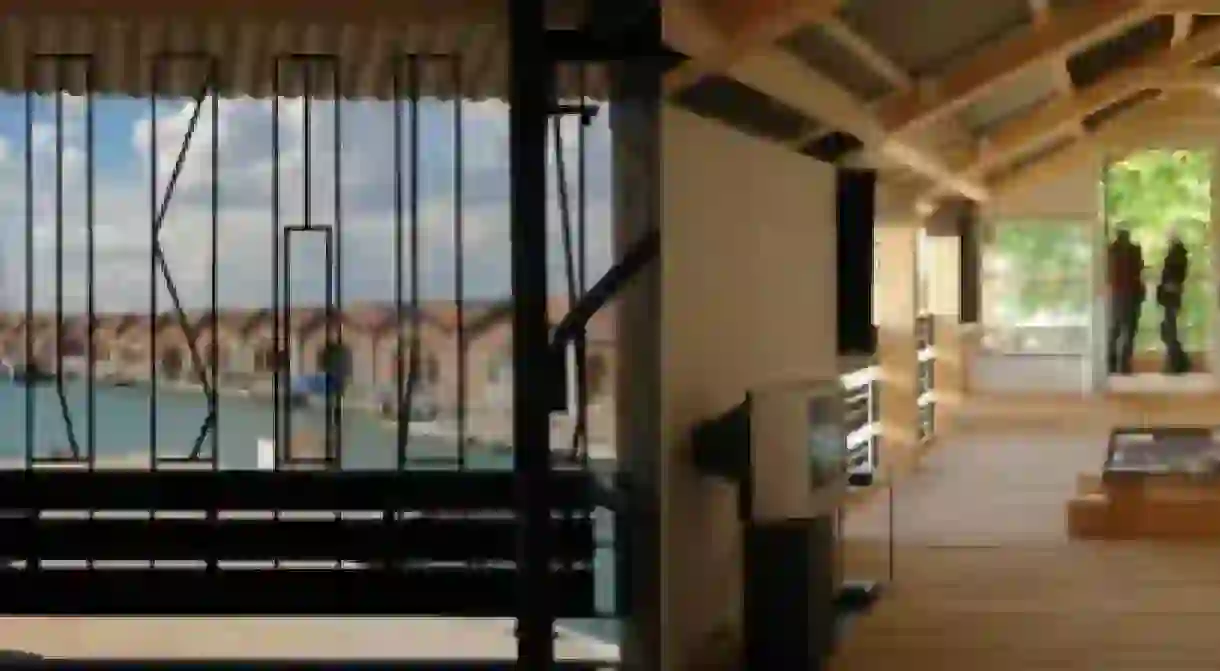Georgia’s DIY Loggia Transforms The Biennale Landscape

The anarchic outburst of constructions that followed the dissolution of the Soviet Union now presides over the collective cityscape of the Georgian capital Tbilisi. With a view to receiving the multi-cultural visitors of the 55th Venice Biennale, a group of local and foreign artists metamorphoses the Georgian Pavilion into their own spacious Kamikaze Loggia–a purposefully makeshift center for aesthetic and social commentary.

Seven creators/residents join forces at the DIY Georgian Kamikaze Loggia, aiming through architecture, installation, performance, poetry and sound to initiate the Biennale crowds into the inner and outer workings of the post-Soviet Tbilisi. Introducing an obscure vocabulary, such as Brusselization, Sighnaghization, Euroremont, Microrayon and Façadism, they point at the city’s unconditional surrender to Western urban prototypes, raw homogenization and functionality, to the detriment of the most traditional, historic neighborhoods. An unlikely emblem of independence from the Soviet State’s mass dictations, the anarchic ‘lodges’ which were built during the early ‘90s were used as terraces, artist studios, extra rooms, or even open refrigerators – and simultaneously signaled the Georgian people’s need for personal freedom and self-initiated ‘beautification.’ In Tbilisi’s 15 centuries of cultural history, Kamikaze Loggia is, ultimately, a challenge to the stamp of authenticity.

Bouillon Group
An art collective founded in the Georgian capital in 2008, Bouillon Group create public/private, religious/ideological counter poles through performance, installation, artistic acts and interventions. Reflecting on the role of private apartments as unofficial public exhibition spaces and centers for debate during the Soviet years, they often make them the core of their immersive artworks and activisms. Located somewhere between fiction and reality, art and life, they have created projects such as Apartment 4, part of the Betlemi Microrayon project (2009) in which the team built a typical 20th century pseudo-bourgeois flat in the medieval Betlemi district, accurate down to the last piece of Soviet dishware. Surrounded by old buildings left by the city to decay, they organized a three-day demolition act open to visitor participation, finally leveling the contemporary apartment with its ancient surroundings – also crashing down, with creative force, the idealism of such harmonious cohabitation.
Thea Djordjadze
Djordjadze (b. 1971) has been deeply influenced by the Georgian architectural landscape, subtly concealing it in abstract works with references to domesticity, music, modernism, science or politics. Integrating found objects, like Georgian carpets, into enigmatic assemblages of plaster, ceramics and cardboard, she mixes the formed and the undefined, inviting the viewer to a personal research of shifting roles and forms. The artist was a member of the acclaimed art collective hobbypopMUSEUM from 1999 to 2003. Now Berlin-based, she recently exhibited in dOCUMENTA(13), as well in solo shows in Kunsthalle Basel, Tokyo and Paris.

Nikoloz Lutidze
The youngest member of the Georgian team, Lutidze (b. 1984) is a visual artist, actor and performer who incorporates architectural reality into his projects. Deeply concerned by the communist legacy and the changing urban landscape of his homeland, he has made Euroremonts (a neologism for the chaotic and lawless renovation of local spaces after so-called European standards) an axis of his works, cleverly and humorously commenting on the Georgian architectural and political status quo. The artist also presented the documentary Freedom of Expression in 2009, shown in several human rights centres in the Caucasus.
Gela Patashuri, Ei Arakawa, Sergei Tcherepnin
One Georgian, one Japanese and one American artist have created a multidisciplinary team that, since 2005, has been originally blending performance, sound and architecture. Patashuri (b. 1973), Arakawa (b. 1977) and Tcherepnin (b. 1981) were accidentally brought together in the performance Grand Openings in Tbilisi (part of the Tbilisi series), then continuing with collaborative exhibitions in Utrecht, London, Paris and Tbilisi’s Frozen Moments. Architecture Speaks Back (2010). Using the first lines of 277 poems by Alexi Bakhneli (construction worker and Patashuri’s father), written between 1978 and his accidental death in 2003, the trio will perform a series of musical compositions in and out of the Kamikaze Loggia.

Gio Sumbadze
Mainly known through his collective work, Sumbadze (b. 1976), among others, created the Tbilisi-based Urban Research Lab (URL), a platform for artists, photographers and architects. Studying and archiving evolving Soviet infrastructure, often seen as a derivative of Marxist ideology, URL created a database that largely focused on the massive modernist estates of Microrayons (Microdistricts). Based on Sumbadze’s architectural research for New Maps of Tbilisi, a project URL co-initiated with the Rotterdam Architecture Biennale, the visual artist was instrumental in shaping Kamikaze Loggia.













